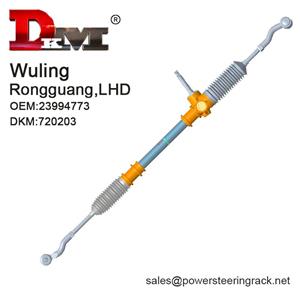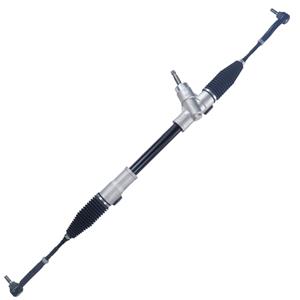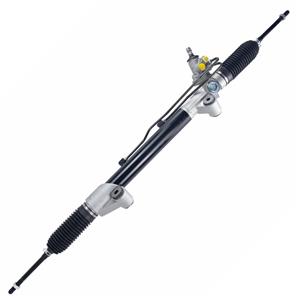Is it normal for liquid to flow out of the dust cover of the hydraulic power steering rack?
As one of the most common steering assistance technologies in modern cars, the hydraulic power steering system mainly provides steering assistance through hydraulic oil to reduce the burden on the driver to turn the steering wheel. In this system, the steering rack is an important transmission component, and its function is to convert hydraulic power into mechanical movement to help the wheel complete the steering action.
As one of the key components to protect the steering rack, the dust cover of the hydraulic power steering rack has a direct impact on the overall performance of the steering system. When repairing or inspecting, some car owners noticed that there was liquid seeping out of the dust cover of the hydraulic power steering rack, so the question followed: Should liquid flow out of the dust cover?
In order to better understand this problem, this article will explore the working principle of the hydraulic power steering system, the function of the dust cover, and the reasons for liquid seepage, and analyze the possible consequences, detection methods, and effective protection of this phenomenon.
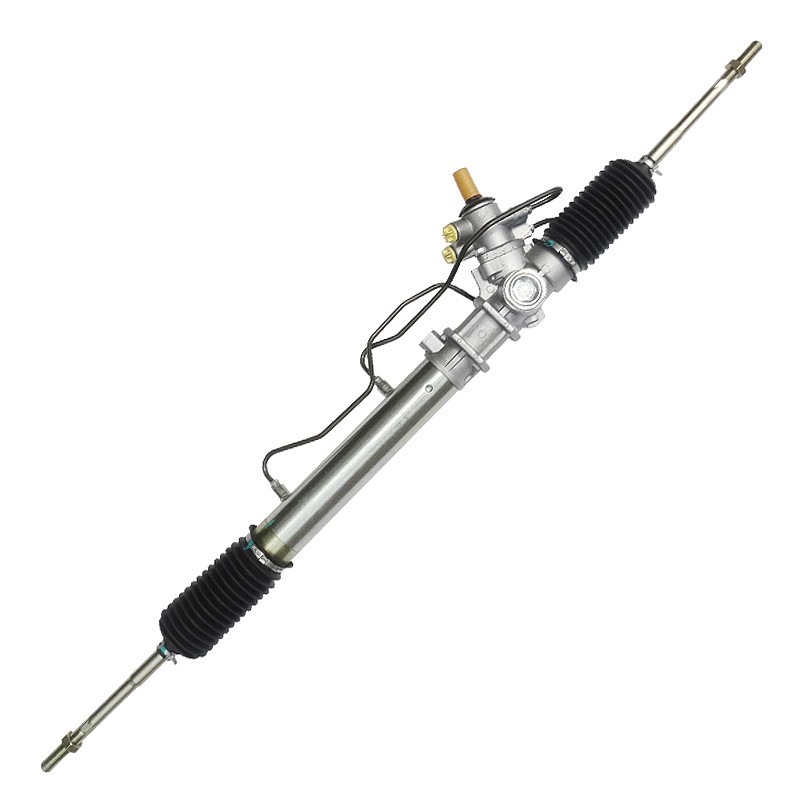
What is the working principle of the hydraulic power steering system?
The working principle of the hydraulic power steering system is to use hydraulic oil to transmit power in the steering rack to reduce the force that the driver needs to apply when turning the steering wheel. The main components of the system include hydraulic oil pump, hydraulic oil pipe, steering rack, steering column and dust cover, etc.
·Hydraulic oil pump and hydraulic oil: The hydraulic oil pump provides continuous oil pressure through the engine drive, and the hydraulic oil flows to the steering rack through the pipeline to help reduce the resistance of steering. Hydraulic oil not only provides power, but also plays a role in lubrication and cooling.
·Steering rack and power-assist function: The steering rack consists of a rack and a gear. Through the push of hydraulic oil, the rack slides along the guide rail to drive the wheels to rotate. When the driver turns the steering wheel, the steering rack and the oil in the hydraulic system interact to provide power and reduce the difficulty of steering.
·The role of the dust cover: The dust cover of the hydraulic power steering rack is a sealing component made of rubber or plastic, which is installed at both ends of the steering rack. The main function of the dust cover is to prevent external dirt, moisture, dust, etc. from entering the steering rack, thereby protecting the hydraulic system from contamination. At the same time, the dust cover also helps to keep the lubricating oil inside the steering system clean and avoid oil leakage.
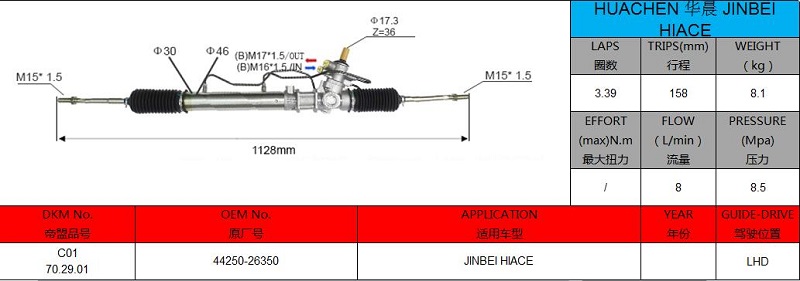
Should there be liquid in the dust cover of the hydraulic power steering rack?
Whether there should be liquid flowing out of the dust cover of the hydraulic power steering rack actually involves two key issues: liquid leakage and liquid lubrication. In the normal operation of the hydraulic system, the outflow of liquid from the dust cover often means the occurrence of some abnormal phenomenon. We will analyze it from the following aspects.
1. Normal function and structure of the dust cover
The purpose of the design of the dust cover is to prevent dust, moisture and other external impurities from entering the steering rack system, while ensuring that the hydraulic oil inside the system will not leak easily. The dust cover is usually closed, and its function is to form a sealed barrier to prevent the invasion of external impurities while maintaining the lubrication function of the hydraulic oil.
From this point of view, there is usually no liquid flowing out of the dust cover. The hydraulic oil should be kept in the pipes and steering rack inside the system, and should not flow out through the dust cover. If there is liquid outflow or accumulation in the dust cover, it usually means that there is a problem with the steering system, which may involve aging, damage or oil seal failure of the seal.
2. Reasons for liquid outflow
Liquid outflow from the dust cover is usually due to the following reasons:
·Damaged oil seal: The sealing oil seals at both ends of the steering rack may age or wear during long-term use, causing hydraulic oil to leak from the seal. When the oil seal is damaged, the hydraulic oil will flow out through the dust cover. Since the oil seal is located close to the dust cover, liquid leakage is easy to see.
·High hydraulic system pressure: When the hydraulic system is working, the internal oil pressure must be kept within a certain range. If the system pressure increases abnormally (for example, the hydraulic pump fails), it may cause the oil to flow out of the sealing part of the steering rack and further accumulate inside the dust cover.
·Excessive or improper use of lubricant: In some cases, if the lubricant inside the steering rack is used too much, it may be pushed into the dust cover when the rack moves, causing liquid accumulation. Although this situation is relatively rare, if the amount of lubricant exceeds the standard or an inappropriate lubricant is selected, this phenomenon may also occur.
·Aging and cracking of dust cover: As the dust cover itself is used for a long time, it may age, crack or fall off due to ultraviolet radiation, temperature changes or friction. When the dust cover is damaged, liquid may flow out from the damaged area and no longer play the sealing role it should.
3. Consequences of liquid outflow
If liquid flows out of the dust cover of the hydraulic power steering rack, this is usually a signal that there is a problem with the hydraulic system. If not handled in time, it may lead to a series of serious consequences:
·Hydraulic oil leakage: Liquid outflow indicates that the hydraulic oil has leaked, and the lack of hydraulic oil will directly affect the power-assisting effect of the steering system. Insufficient hydraulic oil will cause the steering to become heavy and may even cause steering failure, affecting driving safety.
·Insufficient lubrication: If the hydraulic oil is lost, the lubrication of the steering rack and gear will be affected. This will increase friction, increase wear, and even cause damage to the rack. Long-term insufficient lubrication will greatly shorten the service life of the steering system and increase repair costs.
·Contaminant intrusion: The function of the dust cover is to prevent contaminants from entering the system. When the liquid in the dust cover leaks, dust, moisture and corrosive substances from the outside can easily enter the steering system. The entry of pollutants will cause hydraulic oil contamination, sediments will appear inside the system, and affect the normal operation of the hydraulic system.
· Steering system failure: In more serious cases, if the liquid leaks too much, the steering system may fail. In severe cases, the hydraulic system cannot provide enough power, and the driver may need to exert more force to turn the steering wheel, or even lose steering control completely.
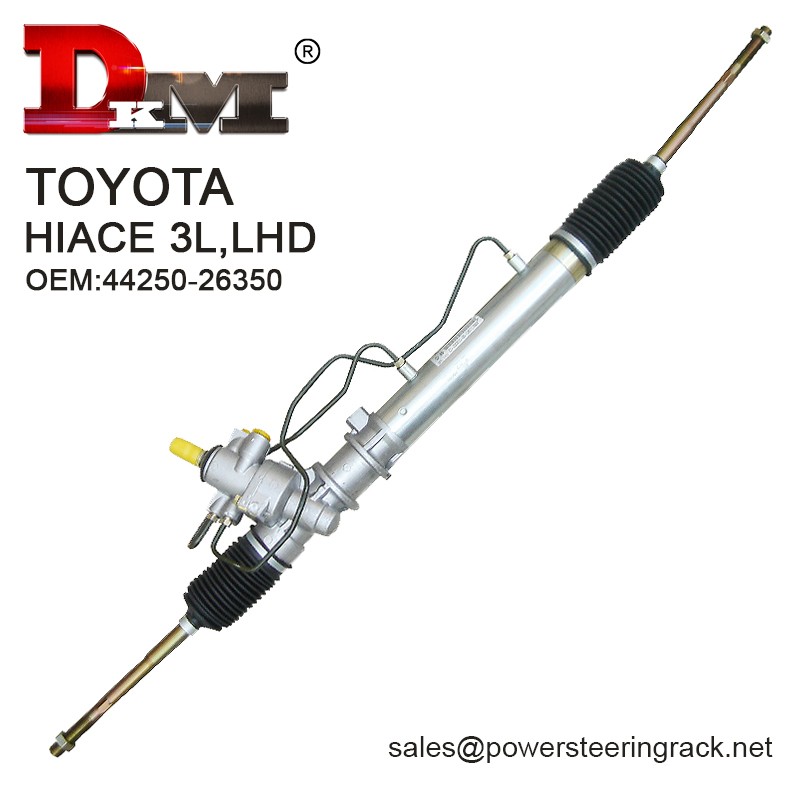
How to deal with the phenomenon of liquid flowing out of the dust cover?
When it is found that the liquid is flowing out of the dust cover of the hydraulic power steering rack, the owner should immediately take the following measures to check and deal with it:
1. Check the oil seal and seals
First, check whether the oil seals and seals at both ends of the steering rack are aged or damaged. The oil seal is the first line of defense of the hydraulic system, and its aging or damage is the main cause of liquid leakage. If a problem is found in the oil seal, the oil seal should be replaced in time to prevent the liquid from continuing to leak and affect the performance of the steering system.
2. Check the hydraulic oil level and quality
Checking the hydraulic oil level and quality is also an essential step. If the hydraulic oil level drops, there may be a leak in the system, especially when the seal or oil seal is damaged. If the hydraulic oil quality is found to be deteriorating, foam, black or impurities appear, it is recommended to replace the hydraulic oil immediately and check whether there are contaminants inside the system.
3. Check the hydraulic system pressure
The normal operation of the hydraulic system needs to be maintained within a certain pressure range. If the pressure of the hydraulic pump is too high, it may cause the hydraulic oil to leak into the dust cover. Through pressure testing, check whether there are abnormal pressure fluctuations in the hydraulic system to ensure that the system pressure is within the normal range.
4. Replace aging or damaged dust covers
If the dust cover itself is aged, cracked or damaged, it should be replaced in time. Damaged dust covers not only cannot effectively protect the steering system, but may also cause liquid leakage and intrusion of external contaminants. Regularly checking the status of the dust cover and replacing aging or damaged parts in time can effectively extend the service life of the steering system.
5. Regular maintenance and inspections
Performing regular maintenance inspections on your steering system to identify and repair potential problems is the best way to prevent fluid leaks and steering system failures. Check the condition of the oil seals, hydraulic fluid, pressure, and dust cover to ensure the proper functioning of the steering system.
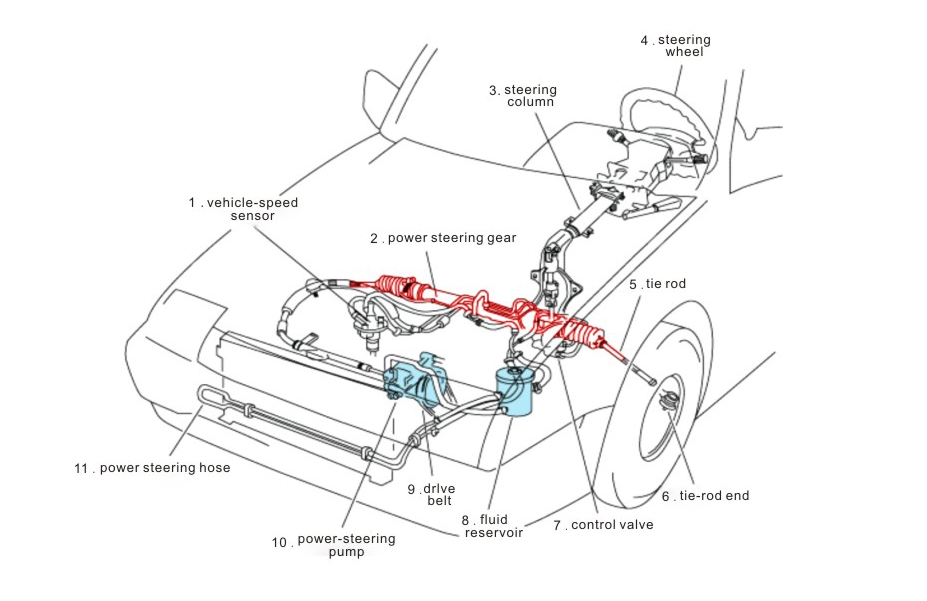
Your Trusted Steering Gear Supplier in China
Guangdong Diamond Auto Parts Co., Ltd. (DKM) is a trusted power steering gear supplier based in China, offering high-quality products to global markets. Since 1996, we have been manufacturing steering systems for various vehicle models, including those of Toyota, Honda, and Mitsubishi.
Our factory is equipped with advanced CNC machines and heat treatment equipment to produce precise, durable steering gears. Contact us today for a quote, and explore our wholesale options and promotional offers.

